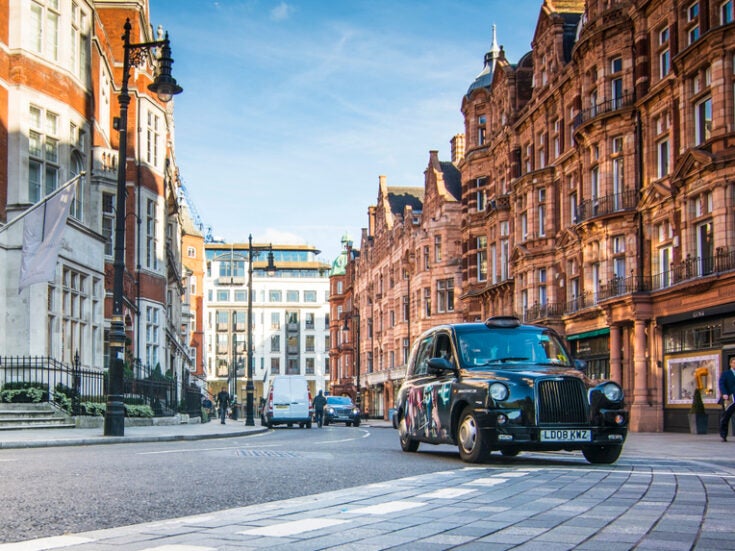
The National Gallery reunites two important self-portraits of Murillo in a fine exhibition marking the artist’s 400th year, writes Christopher Jackson
‘Run my dear fellow to Seville and for the first time in your life know what a great artist is – Murillo, Murillo, Murillo!’ So said Benjamin Disraeli – not necessarily a noted art historian – but with typical aplomb in 1830.
At the time of his saying so, the odds of any decent Murillos ending up in the National Gallery in London were probably about the same as Disraeli’s ever becoming prime minister. But here we are some two hundred years later, and both have come to pass. Bartolemé Esteban Murillo (1617-1682) has always been well-represented in the National Gallery – indeed, one might argue that the collection represents a distillation of the best of every major Spanish artist up to Picasso, with the exception of Goya, in which case only the Prado will do.
This latest exhibition Murillo: The Self Portraits is in Room 1 of the gallery – that little space opposite the gift-shop after you arrive, slightly out-of-breath, at the top of the main staircase. In recent years, the gallery has been cunningly subverting the pressure to deliver yet another blockbuster by doing some if its most interesting exhibitions in here: one thinks of the recent Lake Keitele: A Vision of Finland, and the 2009 exhibition honouring the gallery’s successful acquisition of Titian’s Diana and Actaeon from the Bridgewater Collection.
Room 1 is an intimate space, especially suitable for concentrating on a tangential aspect of a great artist. Murillo was noted in his lifetime – as he is known in ours – for his religious subjects and for his touching portraits of children. One of the latter – A Peasant Boy leaning on a Sill (1870) migrates from its usual position in Room 30 to be here. Another reason for the exhibition is provided by the technicality that Murillo, though born in 1617, was baptised on 1st January 1618: the exhibition has some of that energy of global cooperation (both the Prado and the Frick have been of help), which accompanies a centennial.
But the show is principally noteworthy for reuniting two great self-portraits for the first time in 300 years. The first was produced in 1650-55 at a time when Murillo – the beneficiary of Velazquez’s 1622 departure for Madrid – was the undisputed hero of the Seville painting scene. This picture is an image of a man who knows his worth – and is used to being reminded of it. Beneath the confidence, you detect that same sheepishness about how status has been acquired which one sometimes finds in Shakespeare’s sonnets: it’s the wish to have been a gentleman all along.
That doesn’t mean it is entirely free of the artist’s pride. Murillo’s face is shown in full-lipped confidence within a chipped oval of stone. This decaying marble, we are meant to feel, is vulnerable to the passage of time, and strictly to be contrasted with the eternal genius of a certain Bartolemé Esteban Murillo. The fact that he didn’t turn out to be wrong about this doesn’t necessarily neutralise the impropriety of such self-adulation.
However, the second picture, painted in around 1670, inhabits a more complex world. This bears comparisons with Rembrandt’s great self-portraits which, interestingly, had been painted in the intervening time. If Rembrandt’s influence wasn’t at work directly, one can only marvel at two artists making such similar leaps independently and simultaneously.
In this marvellous work, Murillo is no longer quite so eager to remind the viewer of his greatness. What he gives us instead is an examination of what it is to be an artist. The first portrait is self-assertion; the second, self-exploration.
Strewn on the ledge before him, are the instruments of his trade – a compass, a painter’s palette and a red chalk drawing. If the first Murillo looks as though he came by his wealth during the happy reading of some will, this one contains a confession of lifelong toil. Murillo himself doesn’t quite look humble – his story-arc was never so tragic as Rembrandt’s. But he has aged, and is no longer posing as a gentleman. Arrogance has diminished, creating room for self-knowledge.
It’s also worth noting the Latin inscription under Murillo. This can be translated: ‘Bartolomé Murillo portraying himself to fulfil the wishes and prayers of his children.’ So this picture might also be taken as a representation of a father’s wish to be honest with his children. It movingly says: ‘This is your Dad.’
One difficulty with the art of the self-portrait is that most of us don’t look the way we’d like to. The self-portraitist must continually fight down vanity – both physical and spiritual. In this fine little exhibition, we see Murillo learning to do this. If he looked at a boy in the street, or a pair of prostitutes peeking out of a bordello window, he was invariably moved to pity. What took longer was to see past his success and turn that discernment on himself.
Murillo: The Self Portraits is at the National Gallery until 21 May 2018
Related Stories
Exhibition: Getting under the skin of Ferrari
Review of Jez Butterworth’s New Play, The Ferryman







